“The attempt on my life was not because I am Serhiy Sternenko. Demian Hanul was not killed because he is Demian Hanul. It was because we are Ukrainians. And the Russians came to kill us all.”
Let’s update the information about the latest assassination attempt. How is the investigation progressing? We know that the perpetrator is in custody without bail. What are you being told, and what is the latest information?
The attempt itself took place on 1 May this year, exactly seven years after the second attack (in 2018). I was shot in the back of the head by a man who was detained by passers-by. He went to prison. Just a few weeks ago, the Court of Appeal of Odesa Region upheld his sentence of 10 years in prison for attempted murder. By the way, he is due for release in three years. And on that very same day – 1 May, seven years later – the fourth attack on me was carried out near my home.
Many have seen the video: a woman in light-coloured clothing shooting at me. As far as we know, she was recruited by the Russian special services, who had learned that she was very attached to her FSB handler. She had health problems – she was on dialysis – and she was promised assistance with her treatment in exchange for completing the task.
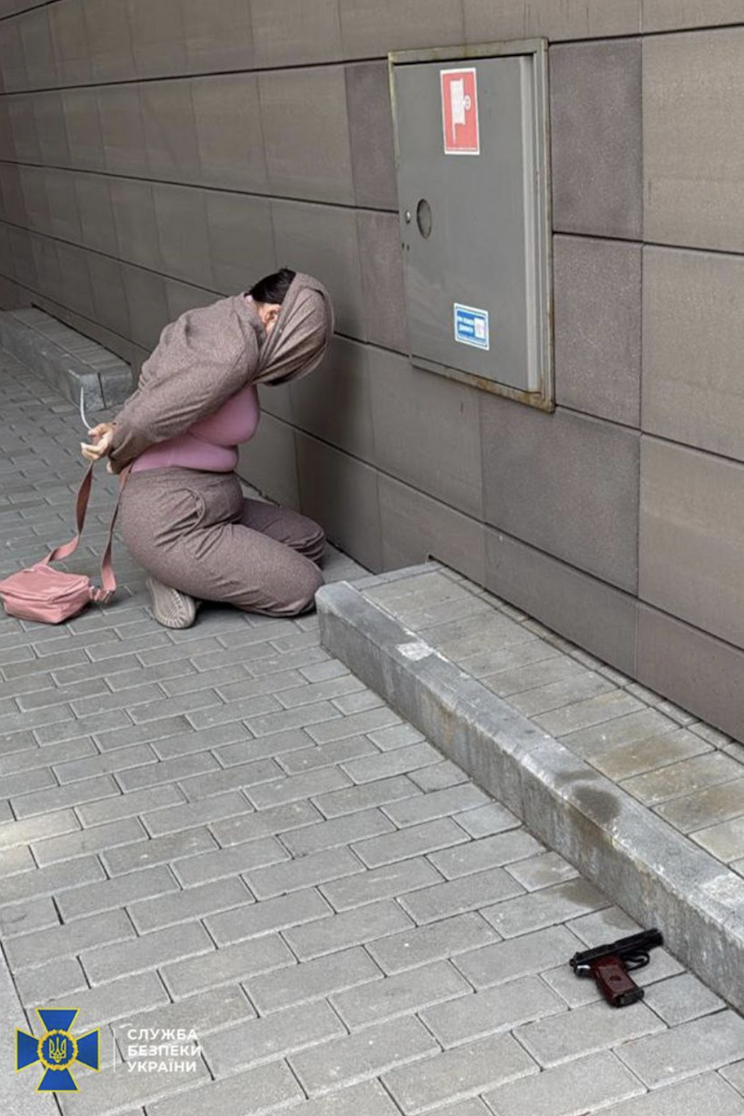
It may seem completely illogical that a person would agree to shoot someone simply because they were told to by a person they had never met. But in reality, nowadays, special services frequently operate remotely. They recruit various individuals under different pretexts, often pretending to be someone else – including officers of the SBU.
It is crucial to inform the public that there are various methods of recruitment and coercion for terrorist acts and contract killings. But these individuals usually die in the process. For the Russians, such people are expendable. We have already seen numerous videos and reports of people blowing themselves up. That is, they follow the handler’s instructions, receive a package – they may not even know what is inside – and are told simply: “Deliver this from point A to point B.” When they arrive at point B, the Russians detonate the device remotely.
The Russians seek out vulnerable individuals: teenagers – who are easier to persuade – those with mental health issues, people in financial distress, or those in despair due to poor health. These people may not even realise they are working for Russian intelligence.
In my particular case, the female perpetrator is in pre-trial detention. I cannot discuss the details of the investigation, but I can say that the work is very active. I am seeing results, and I am grateful to the SBU for their efforts – and also for the fact that an SBU officer saved my life by stopping the woman from shooting.

Let’s clarify. You said that you hired security after the murder of Odesa activist Demian Hanul.
No, it was before that. I hired a bodyguard in 2018, when I was attacked for the third time. After a series of assaults, my friends stepped in to help and initially paid for the bodyguard. Later, when my income allowed, I began covering the cost myself. The bodyguard was with me almost constantly. However, following the murders of Iryna Farion and then Demian Hanul, we realised the need to adopt additional security measures. That was when we rented an armoured vehicle. It is now public knowledge that one of the individuals guarding me was an employee of the Security Service of Ukraine.
Could you explain to those who may not understand what the fundamental difference is between private security and state protection, such as that provided by the SBU, in your situation?
Law enforcement agencies, at the very least, have the legal right to use firearms. Of course, if there were a need to use a weapon during an attack, they would not hesitate. But when you are protected by the state, everything becomes much simpler. Moreover, the state has the authority to conduct operational activities. I will not go into detail, but this enables preventative action against potential threats or attacks.
Some may wonder: how does it happen that a person receives state protection?
When I was attacked for the first, second and third times, I was not granted any state protection. Instead, protection was extended to my attackers – one of whom later fled Ukraine and is now in the Russian Federation. I am now grateful that the state has finally decided to intervene on my behalf. Back then, there was nothing of the sort.
There is a law on ensuring the security of persons involved in criminal proceedings. It requires law enforcement agencies to provide state protection to individuals who are targeted for assassination or face physical threats. This law does not function perfectly – to put it mildly – but it is encouraging that, at the very least, it worked in this instance.
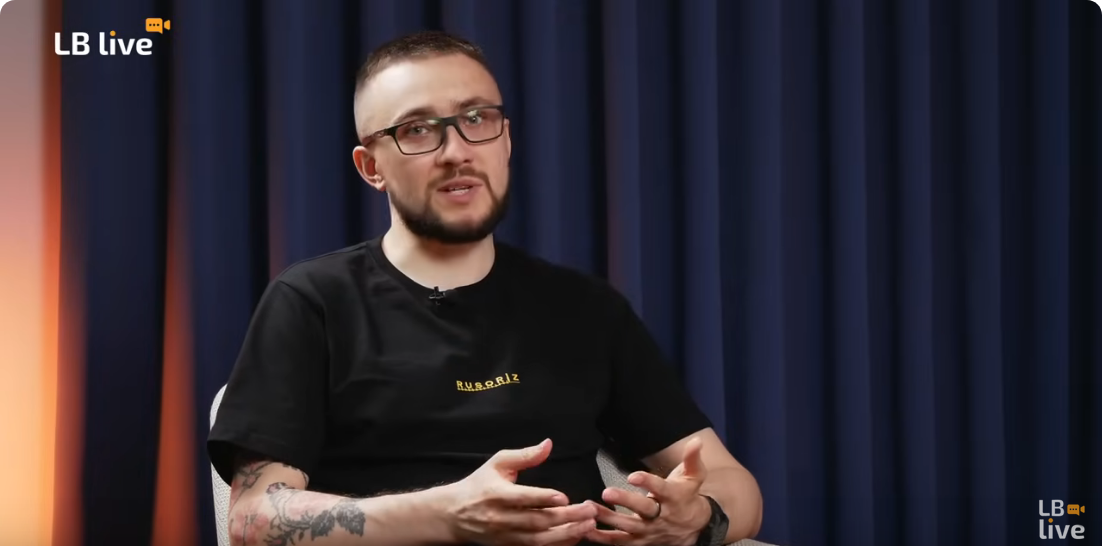
After the 1 May attack, a video was released showing the incident – and a wave of hate followed. You also posted: ‘I’m sorry I didn’t survive like that.’ While many of those leaving comments appear to be bots or pro-Russian accounts, there are real people among them. Some viewers questioned the video’s credibility. Serhiy Sternenko is a well-known volunteer, not just any activist – and logically, if Russia wanted to eliminate him, one would expect them to deploy more reliable agents, more capable professionals. The Russians are anything but fools. Yet, in this case, the shooter was a woman who, based on the footage, seemed to have barely handled a firearm before.
Not for the first time. She had trained for at least a week beforehand. She adopted a shooting stance – we have studied this moment in detail. And she still hit me, did she not? She struck my bodyguard’s shirt. Thank God he is safe – it is nothing short of a miracle.
But if you take an adult and show them one armoured and one unarmoured car, an adult with even basic knowledge will likely be able to tell the difference without hints. That is to say, they should at least have realised that you were in an armoured vehicle – which could be used for cover. These suspicions were provoked, in part, by the way the assassination attempt was executed.
If we return to the murders of Iryna Farion and Demian Hanul – events which are closely linked – it is worth recalling who the perpetrators were. In the first case, it was a man who resembled a hipster, someone you would not suspect. He was not a professional killer, but he carried out his task. In the second case, the attacker was a man wanted by the authorities for his association with the National Workers’ Council and known to struggle with alcoholism. He was neither Rambo nor a trained assassin, yet he succeeded in killing Demian Hanul. In my case, the perpetrator fits a similar profile. Only the FSB officers who recruited her can explain why she was chosen.
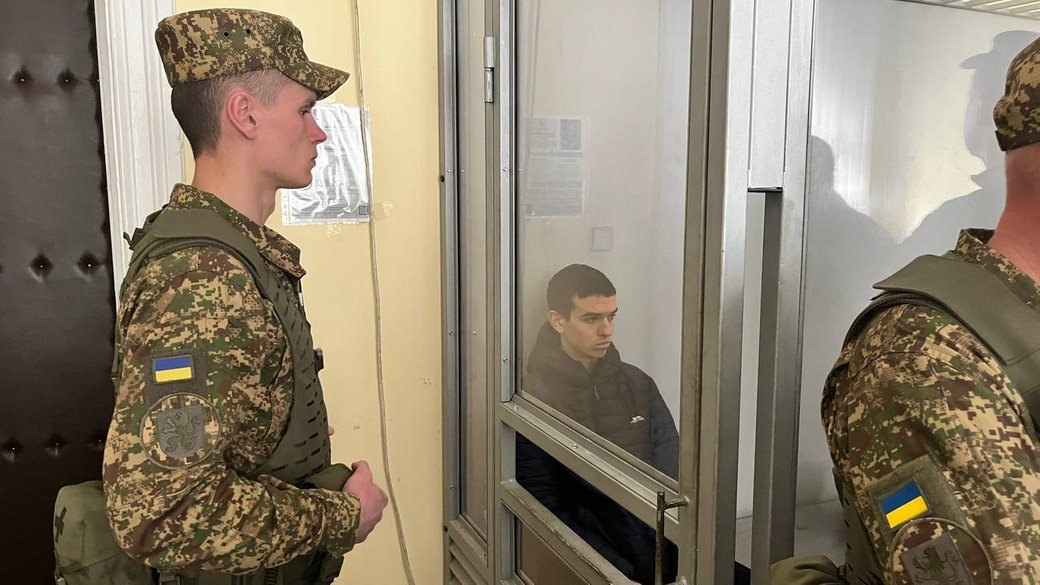
That said, I must admit that the choice likely offered them a tactical advantage – at the very least, the element of surprise. In most people’s minds, a killer is a professional marksman or explosives expert (depending on the method of assassination). But in this case, the attacker was a woman in her fifties who did not fit any such stereotype. Dressed in pink and carrying a handbag, she did not resemble someone capable of aggression. In that sense, the Russians selected a very effective executor. Her relative lack of professionalism can be explained by one critical issue: the Russians struggle to find qualified operatives willing to carry out such missions in Ukraine.
This difficulty arises because Ukraine has a highly effective counterintelligence regime. We have successfully conducted operations on enemy territory using skilled agents. By contrast, the Russians rarely manage to deploy professionally trained operatives within Ukraine – at least not those prepared to carry out direct action.
But what we must all understand is that we are living in a country at war. They tried to kill me not because I am Serhiy Sternenko. Demian Hanul was not killed because he was Demian Hanul. Iryna Farion was not killed because she was Iryna Farion. We are being killed because we are Ukrainians – and the Russians have come to kill us all. It is vital for all Ukrainian citizens to grasp this truth: Russia will use any available recruitment method to pursue these goals.
Secondly, the Russians will continue attempting to eliminate any public figure – commanders of military units, volunteers, directors of charitable foundations, politicians – anyone who represents civic or military leadership. Their aim is to sow fear and terror in our society. We must acknowledge this, prepare ourselves accordingly, remain vigilant and implement countermeasures. Because for as long as that ‘undercountry’ exists, these attempts will continue.
I fully understand that another attempt on my life may still happen. As long as I am alive – or as long as the Russian Federation exists – the threat remains. I intend to outlive it.
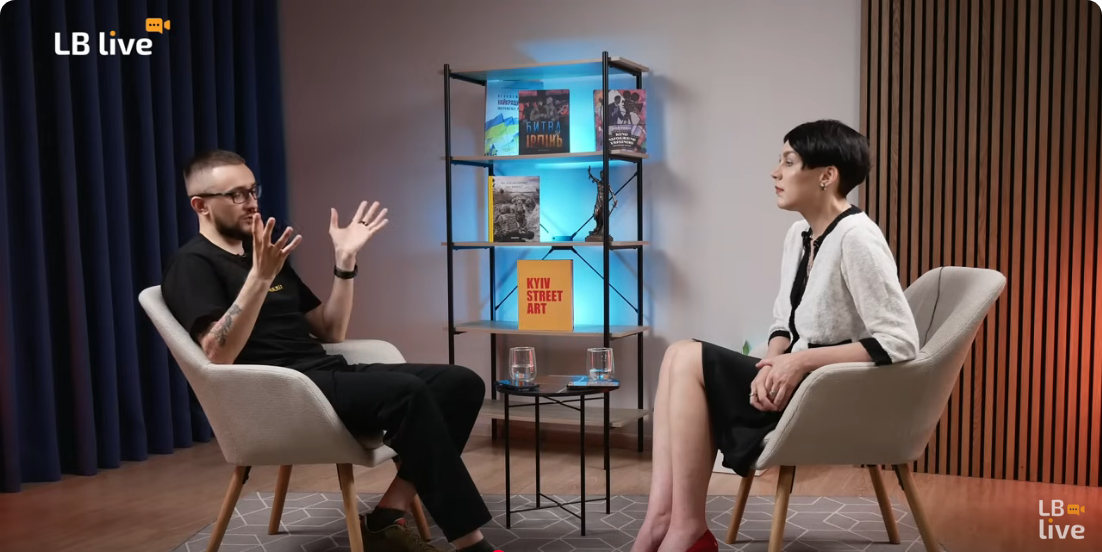
‘We should learn from the Russians how to implement systemically important defence solutions’
Let’s talk about drones – your favourite subject. Well, not only yours, but you write and speak about it often. In fact, it is one of your foundation’s key areas of focus. There is constant debate about the so-called drone war: are we winning it, or are we falling behind?
Opinions here are split. On the one hand, Ukraine has made significant progress and continues to advance in drone production. There is now a broad variety of models, tailored for different tasks. President Zelensky has even suggested that the main obstacle is not technological but financial – a matter of scaling up production. On the other hand, the pessimists say: “Russia is already producing 300 drones a day, with targets of 500 and eventually 1,000 daily.”
They may not hit that number tomorrow – but perhaps by the end of the year. We’re talking about Shaheds here, right? The Russians are building up reserves.
So where do things currently stand in this drone war?
It’s a complex and multifaceted issue. Because when we talk about drones, we must recognise that they serve different purposes. Let’s set reconnaissance drones aside and focus on strike drones – the ones designed to inflict damage. These, in turn, fall into categories: tactical, tactical-operational, operational, and strategic.
Let’s begin with the tactical category – FPVs. Though, in Ukraine’s case, FPVs also often operate at the operational-tactical level, striking targets 30–50 kilometres behind the front line. Our foundation alone has purchased over 185,000 such drones. When it comes to radio-controlled FPVs, we currently hold the advantage.

However, we lag behind the enemy in the development and use of fibre-optic drones – and this presents a serious issue. These drones can reach distances of up to 30 kilometres, which is significant. The critical advantage of fibre-optic drones is that they are immune to electronic warfare. Since they use no radio frequencies, there’s nothing to jam or suppress.
The Russians have learned to use these drones very effectively, especially against Ukrainian logistics. And without logistics, there’s no supply of ammunition, no evacuation, no troop rotation – and therefore, no capacity to defend or advance. That’s the reality in short.
If we talk about the strategic level, it’s difficult to make a clear comparison or declare who is currently in the lead. The enemy continues to use the same types of drones to attack Ukraine – the so-called Shaheds. They are steadily upgrading them, adding new features, including live video transmission capabilities.
On our side, there is a whole “zoo” of different models – Lyutyy, Bober, and others in the long-range category. It’s possible that we have an advantage in drone range. However, the Russians don’t need drones with a 2,000 km reach – Ukraine simply isn’t that big. In contrast, the Russians lead in terms of scale and number of applications. If we had more funding for our long-range drone programmes, our results could be significantly stronger.
Just this past week, Ukraine has been launching daily drone strikes against Russian territory. Just last night, a Ukrainian drone flew deep into the Moscow Region – and it flew well; I watched the objective control footage. According to Russian estimates, Ukraine is currently sending between 300 and 500 drones per day. That is an impressive figure for a country that essentially started from scratch, with limited economic and industrial capacity. It’s very, very good progress. But what we still lack – and what the Russians have – is consistency and implementation.
Before I get into that, I want to mention drones at the operational depth. We currently have solid drone coverage at the frontline – within a 30–40 km range. And we’re also capable of launching long-range drones that travel 300–2,000 km. But there’s a major blind spot in the 50–300 km range, where we lack the means to strike. I recently spoke with a drone operator who had identified a very expensive and critical Russian radar system – the Zoopark-1 – located 90 km away. But there was simply nothing to hit it with.
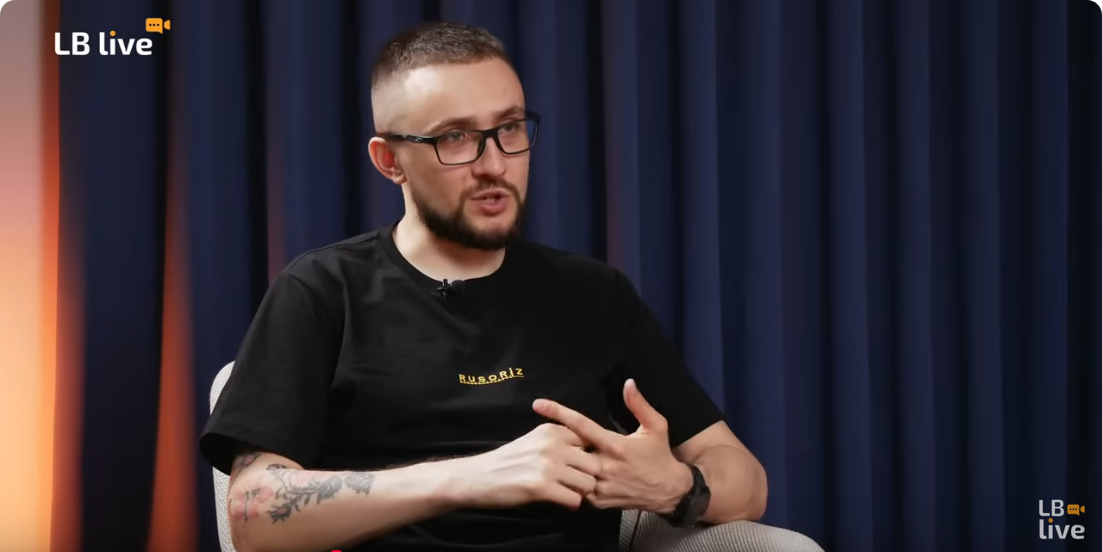
What’s the problem?
There’s no government order. Manufacturers won’t develop a new drone capable of flying 300 km and carrying a 60–100 kg payload unless there is a specific request from the state. It is technically possible. But for this to happen, the government must clearly define what it needs and guarantee it will purchase the final product. Right now, there’s a lack of understanding – and funding.
And this brings us to the Russians’ systematic approach to drone warfare. They launched a full-scale push, ramping up drone production significantly. When they saw that our tactics – particularly targeting Russian logistics – were working effectively in some units, they didn’t just copy the tactic; they institutionalised it. Now they have specialised FPV teams deployed along the entire frontline.
Meanwhile, in Ukraine, things still depend on local initiative. One smart and proactive commander in Unit A might assign a dedicated team to strike enemy logistics. But in Unit B, this doesn’t happen – because there is no unified doctrine, no command from above, no standardised approach across the military vertical.
If we focused more on targeting Russian logistics not just at the frontline, but at deeper concentrations, we could save more of our infantry and better contain enemy offensives. Ukrainian drones are already causing the Russians many problems – but not enough. What we need now is to learn from the enemy: how to systematically implement critical defence solutions on a national level.
High-quality roads are critical in frontline areas
There’s no doubt that the emergence of fibre-optic drones has significantly changed the battlefield landscape.
We were forced to withdraw from nearly the entire Kursk sector due to the use of Russian FPV drones operating on fibre optics. The Russians advanced from both the northern and southern flanks towards a key road near Yunakiyivka. They brought that logistics route under fire control and targeted every vehicle moving along it. Many of our soldiers had to evacuate on foot. Simply on foot – because it was impossible to drive out. And one of the reasons they couldn’t retreat properly was the condition of the road: there was asphalt on the Russian side, but not on ours. The section leading up to the border was broken and impassable. And during the seven months of intense fighting in this area, no one laid an asphalt surface. That was a critical mistake.
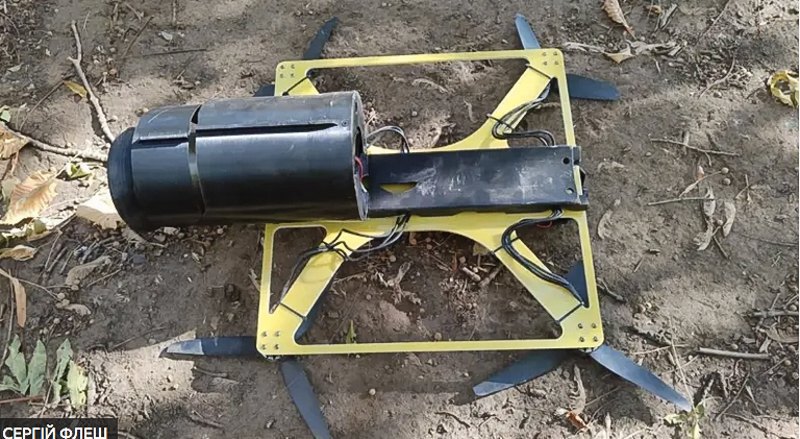
In frontline areas, good roads are not a luxury – they are a necessity. You cannot save money by skipping asphalt, because roads are about logistics. And it’s far easier for a drone to hit a vehicle moving at 20 km/h than one going at 120 km/h. On those broken roads, driving fast simply wasn’t an option. Fibre-optic drones are less manoeuvrable and slower than conventional ones – speed can literally mean survival.
We’re operating on the assumption that the war will not end tomorrow. So how do we respond to this new threat – fibre-optic drones – that have dramatically shifted the rules of engagement? Could something new emerge that will change the situation again?
Of course, it’s impossible to predict which new countermeasures will be invented, but they will come. This is the classic dynamic of warfare – a constant battle between sword and shield. A new sword appears, and then a shield is developed. The sword evolves, and then the search for a better shield begins.
At this stage, the most effective countermeasure is simple: physical destruction. Since fibre-optic drones can’t be jammed using electronic warfare (as they don’t use radio frequencies), they must be physically taken down.
That means our units need to be equipped with pump-action shotguns loaded with specialised ammunition. They need to be trained regularly in drone interception tactics. And yes – we need roads. Real, paved, high-quality roads. I often see comments online complaining: “Why are we laying asphalt during a war?” Well, if we’re talking about frontline regions, the answer is clear: because those roads save lives.
Fibre-optic drones cannot be neutralised by a single solution. It has to be a comprehensive approach. We need nets over roads to block aerial access. And yet, many local authorities in frontline towns are still spending money on things like flower beds. I’m sorry, but if the Russians are 5, 10, or 20 kilometres from your city – if they could be on your doorstep within a week – why are you focused on flower beds?
You should be erecting nets to shield your roads. Once, we laughed at the Russians for doing this – but their approach increases the survival chances of troops and civilians alike.
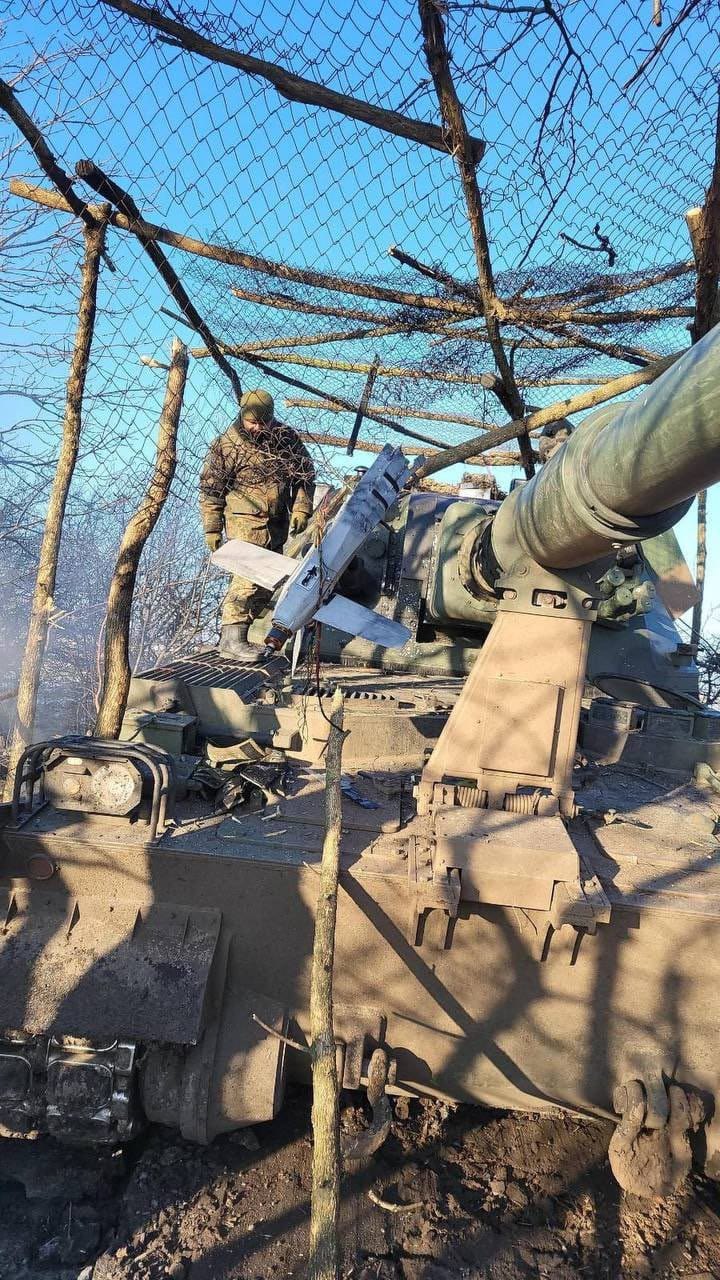
There’s no magic solution that will save us – not from fibre-optic drones or anything else. What we need is a complex, layered system of responses, where every measure taken decreases the chances of the enemy succeeding. That’s why we must build anti-drone netting, pave roads with asphalt, train personnel, distribute pump-action rifles and suitable ammunition, and begin thinking seriously about developing laser-based countermeasures.
I believe that in the future, many armoured vehicles will come equipped with active air defence systems. For example, if an enemy drone approaches, a tank could deploy an interceptor drone that automatically launches to destroy it. Or it could be equipped with a laser module that targets and disables the threat.
That’s actually what I wanted to ask you next: what other technologies should we focus on? FPVs are important, but their capabilities are limited. Should we be looking into something like the MQ-9 Reaper?
FPVs are just one of the available tools – they won’t win the war by themselves. As for the Reaper, yes, it’s an impressive platform, but I’m not convinced it’s what we need right now. It’s great that Reapers are operating over the Black Sea – that’s no secret, and it clearly irritates the Russians. But their function there is mostly about long-range radar detection. They operate more like flying radars.
Do we need flying radar platforms? Absolutely. We definitely need that capability. But we still don’t know what happened to the AWACS that were reportedly provided to us by Sweden – or were supposed to be.
Should we invest in building our own Reapers right now? I don’t think so. It’s extremely expensive technology, and any large-scale investment would tie up valuable resources for relatively limited return. We’re better off focusing on deep-strike capabilities, tactical drones, and drones that can operate in the operational depth range.
Even at the tactical level, we have serious gaps. There’s a lot of basic, foundational work still to be done – and that’s where our attention and resources should go.
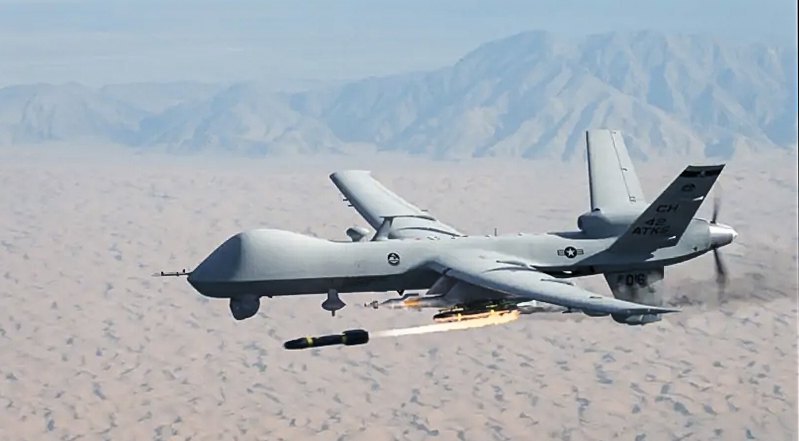
“Drones from our foundation alone have shot down about 1,400 Russian reconnaissance drones and Lancets”
Let’s talk about interceptor drones. I was recently at the President’s Office, where he spoke very positively about their effectiveness. He mentioned that in one Region alone, interceptor drones had shot down more than 15 Shahed drones –not just once, not twice, but consistently. This points to a pattern, and he stressed that if we had greater capacity to manufacture these drones, they could be a decisive factor in the drone war.
Interceptor drones currently fall into two main categories.
The first category is the more conventional type – basic anti-aircraft FPV drones. These are primarily designed to intercept slow-moving aerial targets like the Orlan, ZALA, Supercam, and other reconnaissance UAVs. They’re also effective against the Lancet, Molniya, and fixed-wing FPV drones, which the Russians often deploy to terrorise Kharkiv and other cities within a 50-kilometre range. We already have these types of drones in large quantities, and they are being mass-produced. Our foundation alone has supplied enough to shoot down around 1,400 Russian reconnaissance drones and Lancets.
The second category consists of drones specifically designed to intercept Shaheds. These need different capabilities. For instance, an Orlan typically flies at 100–140 km/h, whereas a Shahed can reach speeds of up to 200–300 km/h. It doesn’t maintain 300 km/h throughout the flight, but it does accelerate and climb at certain stages, requiring a different kind of drone to counter it. We already have Ukrainian-made drones with these characteristics, and our units have successfully used them to shoot down Shaheds. Now the challenge is scaling up this success.
But here’s the key issue: the problem isn’t just about having these drones – it’s about our ability to organise and scale drone-based Shahed interception on an operational and structural level.
When it came to reconnaissance drones along the frontline, we adapted and scaled very quickly. These drones tend to operate where there are already numerous experienced operators who have logged tens of thousands of hours and are eager to work with new technologies.
However, Shaheds are a different case entirely – they fly deep into our territory. That means they must be intercepted mid-route or targeted in the deep rear. And this is where we’re hitting a wall: we simply don’t have enough trained drone operators in the rear Regions. The shortage is critical. The responsibility for this lies with the Air Force. And frankly, I can’t say they are actively or systematically developing this direction. Yes, we’re short on money and drones, but even more critically – we lack leadership. We need competent top-level managers who can organise and coordinate this kind of work. Right now, this is one of our biggest unresolved problems.

You recently mentioned that, due to existing challenges, you would limit drone distribution to new units.
Yes, and the main reason is a lack of funding. But there’s another major issue: we have a large number of reconnaissance drones and Shaheds that go unshot simply because the Air Force command prohibits operators from using explosives, for example. It’s not covered in the official regulations. And honestly, it’s often easier to invent or produce new technology than to integrate it into the system. That’s a huge, ongoing problem.
I also wanted to ask how you decide which manufacturers to buy drones from?
It’s quite straightforward. We don’t choose – the units who use the drones do. We simply provide them with the opportunity. When we come across a new manufacturer, we arrange a combat test: we either buy a small test batch or get it for free, send it to the units, and they test it in the field. If they’re satisfied, we continue buying from that supplier. If not, we stop. Naturally, we also ensure the prices are reasonable.
If a unit reports shortcomings, we go back to the manufacturer and say, “Fix this, and we’ll keep working with you.” We work with many small producers who make excellent, high-quality drones – and the beauty of working with them is how quickly they adapt based on our feedback. That flexibility is a major advantage.
You also wrote that you’re limiting drone distribution to newcomers. But they’re the ones who get less media attention and therefore less support. Isn’t that a problem?
It’s not really about being media or not. Among our more experienced partners, many aren’t public at all. Some units even ask us not to disclose their hits or successes. We’ve worked with a wide variety of people. Our main principle is to respond to everyone’s needs – including new units. We understand that without access to high-quality tools, they simply won’t be able to grow or survive.
And why do people keep coming to us? Because we’re fast. We quickly adapt drones to battlefield requirements. In contrast, state supplies are often very slow. By the time drones reach the units, they may already be outdated – or they might just be of poor quality. We repurpose a lot of these drones to make them usable again for the military.
What’s our working model? We operate on trust. If there’s a request, we immediately contact the manufacturer and send out the drones. Only then do I start looking for the funds to pay for them. At one point, our debt to contractors exceeded UAH 100 million. But we’ve always met our obligations. That’s how we avoid any pause in supply – and that’s what really matters.
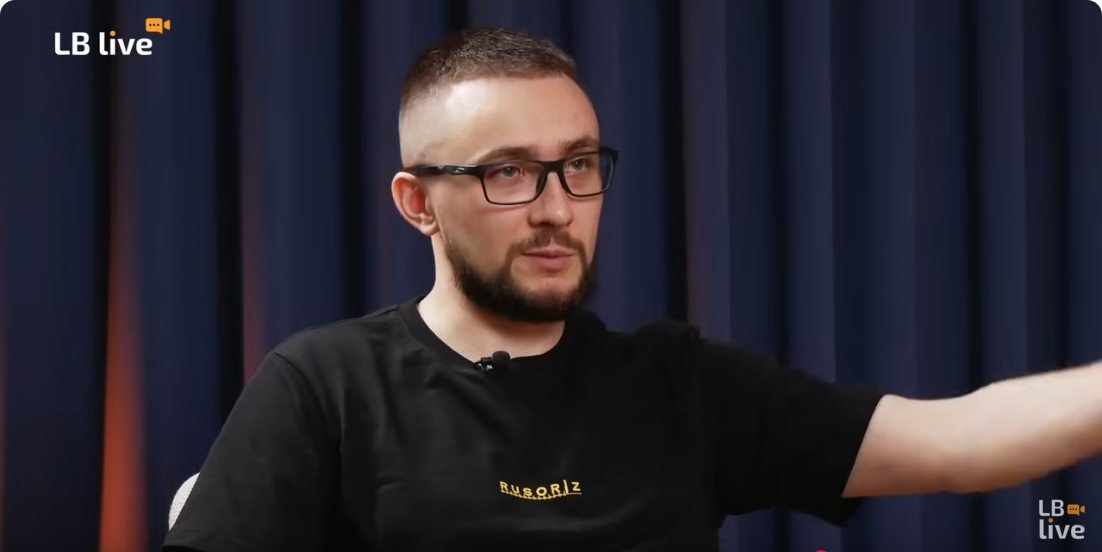
“The war will end when either Russia or Ukraine disappears”
Has this whole narrative – “Trump will come, restore order, and peace talks will begin…” – significantly impacted donations or support for your foundation?
To some extent, yes. But in the past few weeks, people have started to come to their senses. They’re beginning to understand more clearly what’s at stake. Even if some kind of 30-day truce were to happen, every Ukrainian must realise: that would be just a truce – not the end of the war. The war will only end when either Russia or Ukraine ceases to exist. I don’t see any other possible outcome.
Let’s circle back to that later. For now, let’s talk about the poor quality of public procurement. In theory, everything should go smoothly. But in practice, the unit receives the equipment – and it’s barely functional. What can be done about this?
We’ve launched a programme called Redron, which repurposes drones from state supplies or from other foundations – because, yes, sometimes their equipment ends up with us too. So far, we’ve refurbished around 3,000 drones, and we’re actively scaling up the initiative. It’s far more cost-effective than purchasing new ones from scratch. Right now, many brigades are sitting on thousands of unusable FPVs. One brigade alone had more than 2,000 such drones in storage. And they’re not the only ones.
So what’s the problem?
Firstly, logistics. It can take up to six months for a drone to get from the manufacturer to the frontline unit. If it arrives within a month – that’s considered incredibly fast. This is a direct responsibility of the Logistics Forces command.
Secondly, there’s no proper quality control or real-time feedback from the end users – the military. I’ve heard that the Defence Procurement Agency plans to launch an initiative aimed at speeding up this process, which would be very welcome.
But there have already been tragic consequences. I know of cases where people died due to low-quality drones. Yet the state kept buying the same models. Yes, the defects were eventually fixed – but only after more units were bought, often at inflated prices.
“My dream is a fully autonomous drone that can complete a mission without navigation and communication”
Let’s talk about upgrading and rethinking existing technologies. The Russians are increasingly focusing on mechanical vision and swarm tech. Are we working in these areas too?

When it comes to FPVs, machine vision has actually been used for quite a while – especially in aircraft-type FPVs. It’s essential for targeting, particularly in conditions with radio interference or when drones fly beyond the radio horizon.
As for more advanced AI – yes, some work is underway, but we’re still far behind. And that’s not just due to a lack of resources – it’s a matter of support. We lack real, substantial assistance from our partners, especially when it comes to AI and chip development. This is precisely the kind of help the West could provide quickly – and benefit from themselves in the long run.
Personally, my dream is to create a fully autonomous drone that can carry out a mission withoutsatellite navigation, without low-Earth orbit positioning or any radio communication – one that uses visual navigation on a pre-loaded 3D map to reach a target, identify the object from similar ones, and strike it. Once we get to this point, it will change the battlefield – and open up unprecedented possibilities for sabotage missions.
I really hope we get there before the Russians do. I want to believe we will.
One of the latest developments is the use of SIM cards in drones, and you’ve spoken about limiting their free sale. That seems obvious – something that should’ve been done ages ago. What other internal countermeasures should be introduced right now?
It has to be a complex approach. Restricting SIM card sales alone won’t solve the problem. If that’s all we do, there will be zero effect. The Russians will simply find workarounds – using roaming SIMs, for instance.
To block them from piggybacking on our mobile infrastructure, the state and mobile operators must work together, closely and systemically. That includes things like traffic monitoring and quarantine measures.
I know for a fact that the enemy uses quarantine settings – which allow them to limit the devices that can connect to certain base stations. We need to start using such tools too — not reactively, but proactively.
Is what you’re describing – his disruption of mobile service – what’s happening in the Moscow Region?
Not quite. In the Moscow Region, they’re shutting down the network entirely. What I meant by quarantine is different: for example, if you move from one Region to another, your mobile internet doesn’t work properly for the first three days. That’s traffic restriction. And it’s a real tool – one that can counteract drone operations.
I’m not sure if it would work against our UAVs, but if we mirrored these mechanisms, it could definitely help.
I know some mobile operators are already willing to help and are proposing specific measures. But nothing will work if only one or two operators act on it. The state needs to step in: gather all the operators, ask for their input, work out a joint solution, and then formalise it with clear directives and legal regulation. The government must be more actively involved here.
Now, to wrap up the technical part of our conversation – let’s talk about ground robotic systems. We don’t hear much about them, and they’re not developing as quickly. Why is that?
Let’s be honest: both the state and the military leadership have favourites among brigades, and it shows. Some units get much more support than others.

You see it clearly when it comes to supplies. Some of our teams are still receiving almost no FPVs at all. We talk to operators every day. Since we started, we’ve worked with over 600 different units across the Armed Forces and beyond. And the reality is – most brigades still lack adequate FPV support.
So the problem is unequal distribution?
That’s part of it. But first and foremost, there’s never enough equipment in war – that’s the starting point. But yes, the problems lie in both how drones are distributed and in how procurement is handled.
If we continue to procure drones, ground systems, weapons, and equipment in the same way we’re doing now, we’ll always have this pattern: shortages followed by overstock. It’s a cycle – and it stems from the current approach to contracting.
UAV contracts are usually signed for one year, rarely more. There’s no long-term strategy.
And that’s critical. Because for manufacturers to meet their obligations, they need long-term planning – to purchase components in advance, set up logistics, plan to scale production, hire new staff, and invest in equipment. That’s a huge undertaking. And it can’t be done with short-term or last-minute orders.
Let’s briefly return to ground-based systems. What’s happening there?
They’ve actually been developing quite actively – especially over the past year. Of course, they receive less funding, but they’re important nonetheless. Right now, I’d say they’re not very effective as a direct firepower tool – they’re too easily destroyed by an FPV drone.
However, they’re quite effective for remote mining. You roll in, drop a mine, and roll out. Though, to be fair, we also use FPVs for remote mining.
That’s a separate and important topic – remote mining. This needs to be addressed systemically. The state should actively purchase cheap mines like the PTM. It’s an incredibly effective tool, especially as the Russians are starting to use motorcycle assaults more often. Mines can seriously strengthen our defence and save infantry lives.
Coming back to ground robotic systems: right now, considering current production volumes and drone costs, they’re not cost-effective for direct combat – they’re just too easy to destroy. But for mining operations, they are very promising. And they’re also useful for logistics, transporting supplies, evacuating the wounded or fallen. Their advantage lies in payload capacity and their ability to take on different types of tasks than UAVs.
“My favourite thing is when drones fly into Russians’ faces”
Let’s end this section on a positive note – a kind of victory. You said your drones operate along almost the entire frontline?
Almost all of it! And even at sea. We have a separate initiative called Rusoriz Special, and some of the stories from there are fascinating. For example, we’ve started integrating FPVs with naval drones. These are drone carriers that sail close to the target zone, then launch FPVs that take off and engage.
They hit everything – even helicopters. What’s the most satisfying moment for you, personally? Something that feels like your own victory, your own catch – in the best possible sense.
Honestly? My favourite thing is when drones fly into Russians’ faces. Yes, they’ll probably have “new babies” there soon [i.e. countermeasures], but until that happens – they need to be destroyed here and now. And when that happens through something we’ve built with our own hands, together as a team – it’s incredibly satisfying.
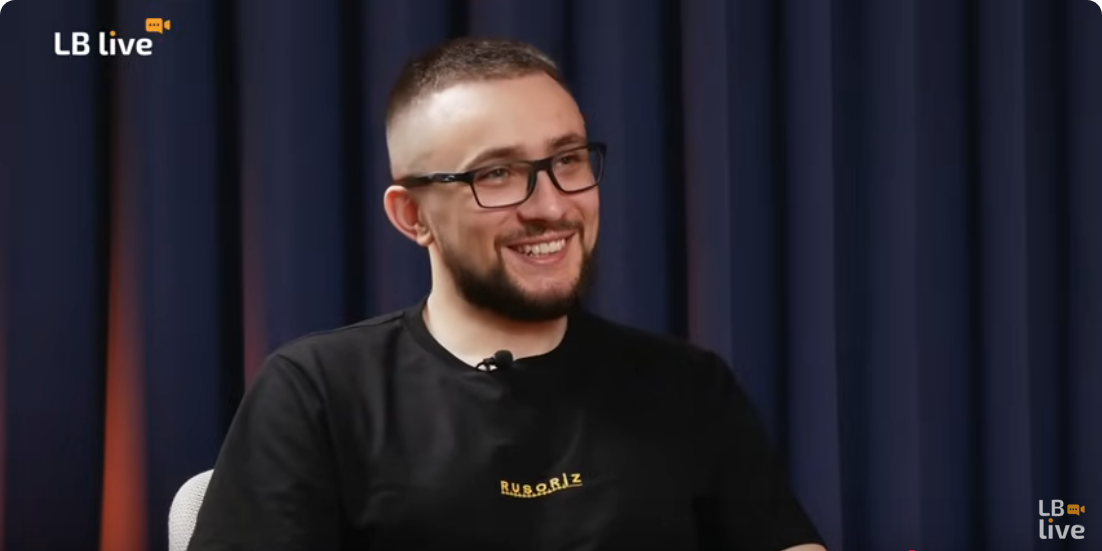
It is always our soldiers who carry the main burden – they deserve honour, praise, and deep gratitude. Our task is to give them the best tools possible. To listen carefully to their needs and requests, to communicate them to manufacturers, and to produce exactly the kind of equipment they require – the kind that doesn’t force them to figure things out on the go.
Naturally, I was pleased when the drones provided by our community destroyed the IL-76 in Pskov, along with its cargo. And of course, I was pleased when the SBU’s Alpha Group shot down two helicopters – a Mi-8 and a Mi-28 – in just a few days.
But probably my favourite thing is when drones fly right into the Russians’ faces. Because new equipment can always be built – it’s a renewable resource. But a Russian soldier is not. Sure, their women will give birth to new ones – eventually. But until then, they must be destroyed here and now.
That’s why it’s best to take out the Russian infantry. Because if you destroy that one guy, he won’t reach our positions, won’t kill our people, won’t harm anyone. And in the end, no helicopter, no tank, no IFV goes anywhere without him. That’s what gives me a certain grim satisfaction.
Now, to wrap things up, let’s shift into futurology – in the good sense of the word. Of course, making absolute predictions is always a bit of charlatanism, but we should still try to anchor where we are now.
At the moment, negotiations are stuck in a grey zone – it’s unclear whether they’ll happen or not. In his interview with LB.ua, the Commander-in-Chief of the Armed Forces, Oleksandr Syrskyy, said clearly that the Russians had already planned their summer and autumn campaigns. They have no intention of stopping – you can see this clearly on the frontlines.
So what could happen by the end of 2025?
Well, one thing’s certain: the Russians will definitely continue offensive operations in the east – particularly in the Donetsk Region, while also keeping Sumy and Kharkiv Regions under pressure. We might also see feints or diversionary actions in the Chernihiv Region.
Of course, not everything can be predicted – but one thing is 100% clear: the enemy will keep trying to push forward.
That said, we should understand that the enemy is also under serious strain – they’re running short on equipment and personnel. So much so that they’re even sending wounded soldiers into battle.
We shouldn’t expect any major breakthroughs on their part – they likely won’t be able to reach operational depth. However, they will keep trying to capture settlements, inflict casualties, and score local tactical successes.
More importantly, I think the enemy will escalate air terror, realising that they won’t achieve any major territorial gains. That means cruise missiles, ballistic missiles, guided bombs, and various types of drones.
This is exactly why countermeasures must be a priority now. FPVs may not shoot down ballistic missiles (yet), but they’re already capable of taking out Shahed drones – and we’ll be working more actively on that front too.
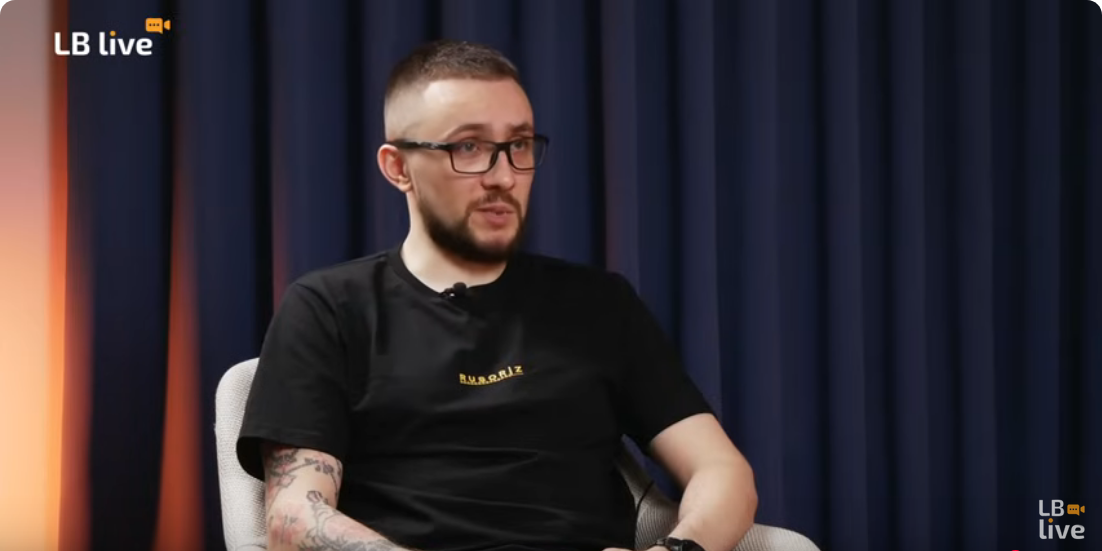
“If not for the use of drones, we might not have survived”
You mentioned Sumy Region. Before the operation near Kursk, the Russians were shouting that they’d create a 30–40 km buffer zone. Now they’ve gone quiet and are talking about 7–10 km. They’re adjusting their appetites.
Our enemy is a devil, an asshole, and a bastard – but not an idiot. And we need to recognise that. Of course, they’re adapting their objectives based on their realities, capacities, and needs. At the same time, I see signs that they’re starting to overestimate themselves a bit. Judging by their statements, they’re already fantasising about taking Kyiv again. When the enemy becomes overconfident, they tend to make more mistakes – and that can work in our favour.
The main thing for us right now is to focus inward: not to mess things up, to continue army reform, and to build up our unmanned capabilities. Because without drones, we might not have survived. That’s what I believe. We must work on ourselves more now – our system, including the army, is far from perfect.
One of the positive developments is the transition to corps structure. It’s absolutely the right move – I supported it wholeheartedly. At the time, I was actually pushing for the divisional system, but the underlying idea is the same: we need to scale up our military formations to hold a wide defensive front.
It’s also critical to introduce real accountability for commanders who don’t value or protect the lives of their personnel. Obviously, war brings casualties. And a commander shouldn’t be afraid to give combat orders – if they’re reasonable and adequate. But if a unit takes excessively high losses, someone must be held accountable. Soldiers are responsible for what they do – so why do certain commanders escape responsibility?
We also have a long way to go in terms of mobilisation and basic military training. There has been some improvement since the former commander of the 95th Brigade began working on this – I see positive shifts. But overall, we need more internal effort and focus.
I won’t try to set a specific mobilisation age, but one thing is clear: mobilisation should not be what it is now. We can’t avoid some state coercion, but where force is used excessively or improperly, there must be an adequate response. Perhaps the mobilisation apparatus needs to be reformed. I say this not as a military official, but as a citizen who sees real problems – ones that need to be solved.
Because those problems give Russians a serious advantage, especially when it comes to intelligence, surveillance, and reconnaissance (ISR). And we mustn’t forget – we’re not only fighting the enemy, we’re also fighting our own internal idiocy. There’s plenty of that too. We’re far from perfect.
“At the moment, we cannot expect a quick return to the 1991 borders”
Are you booked, by the way?
No, I’m not. There’s one person in our foundation who is booked, but it’s not me.

You mentioned internal idiocy – and it reminded me how shocked many were when General Zaluzhnyy said that there would be no return to the 1991 borders in the near future. People treated it like a betrayal. But it was obvious.
Well, yes – it’s obvious. At this stage, we simply lack the manpower, weaponry, and equipment to achieve that strategic goal – a goal which, if realised, could seriously accelerate the collapse of the so-called Russian Federation.
But let’s not lose hope. If our esteemed partners finally decide to genuinely help us win, not just survive, everything can change. We’ve still not seen a fraction of the weaponry NATO countries possess used in our theatre of war. For example, the United States has thousands of JASSM cruise missiles, each with a range of over 500 km. If we were given even a thousand of those today, we could severely weaken the enemy’s defence systems.
But in our current circumstances – with the kind of help we’re getting now – it’s unrealistic to expect a return to the 1991 borders anytime soon.
Remember how it all started? Everyone was saying: “Oh my God, Trump is coming, and now everything will definitely change.” But that illusion is gone. Even the government no longer gives out false hope, unlike at the beginning of the Great War. You’d think this would make society more hardened, more resilient – but that’s not really happening. And the reaction to Zaluzhnyy’s statement proves it.

In many ways, we’ve failed in our information work. During wartime, it’s incredibly difficult to strike the right balance: there must be adequate, constructive criticism, but also a level of censorship necessary for survival.
In hindsight, I believe a number of social media platforms should have been restricted right from the start of the full-scale invasion. Telegram was partially restricted, but I think TikTok should have been completely shut down. It would’ve been easier in early 2022 than now, in 2025.
Today, the authorities are afraid of unpopular decisions – though I’m not sure why, given that there aren’t elections tomorrow.
Have you changed your mind about not participating in political processes?
Right now, while the full-scale war continues, I remain firmly against any kind of political processes or infighting. Because once that starts, politicians begin thinking in terms of electoral ratings, not national necessity. And that’s when we start hearing MPs argue that the TRC workers shouldn’t wear military uniforms, or that martial law shouldn’t be extended. That’s when backroom political games begin, and mutual hatred deepens.
We start fighting each other instead of the enemy. And if we’re not careful – and I truly hope this never happens – we could end up repeating the tragic mistakes our ancestors made a century ago.
No, better not. Next time, you and I might end up sitting somewhere in Prague, if we even manage to get there in time. And that would be a loss.
Frankly, I think it would’ve been better if we had once sat in Moscow instead.
I began this conversation by saying that the threat posed by our enemy will remain with me for the rest of my life – and not just for me, but for every Ukrainian. Don’t think I’m talking about myself here. I’m talking about all of us.
As long as Russia exists in its current imperial chauvinistic form, it will remain an existential threat to Ukraine. Don’t fool yourself into thinking that a truce would mean the end of this war.
And what would be a victory for you?
Victory would be to outlive Russia.
And to speak with each other freely, after it is gone – gone in its current imperial form.









